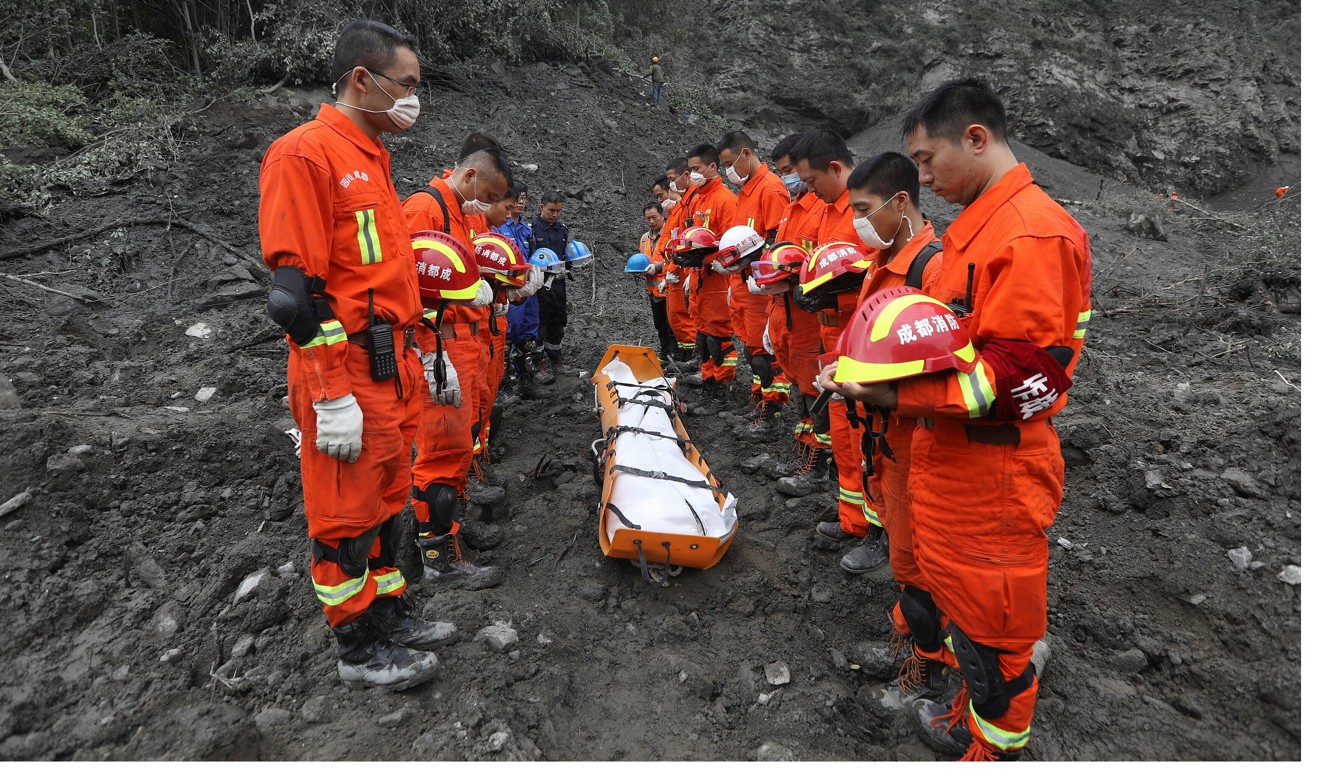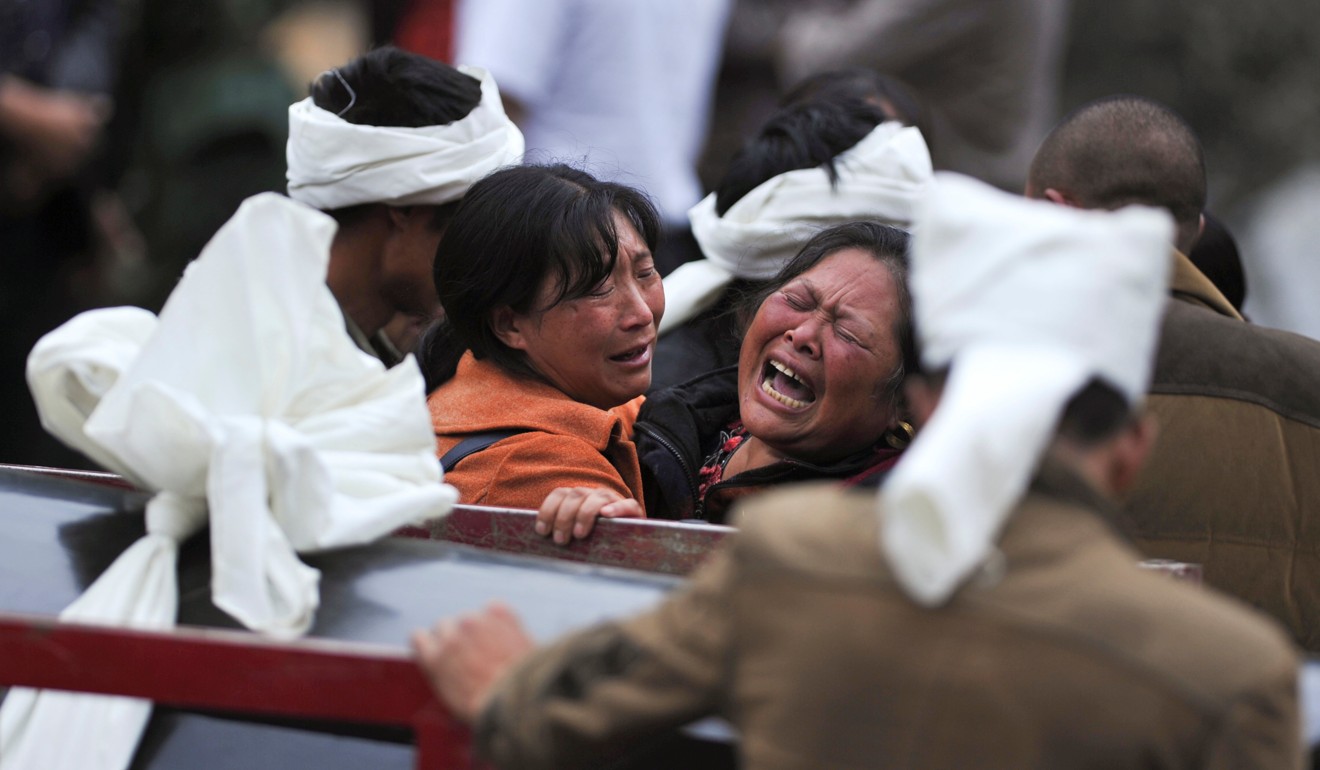
Ten bodies found, 93 missing at southwest China landslide site
Fifteen residents thought to be missing are found safe elsewhere as thousands of rescuers descend on obliterated mountain village
Rescue workers in Sichuan province on the mainland have recovered more bodies, but 93 people remain missing following a massive landslide that engulfed a mountain village.
Ten bodies had been discovered at the disaster site by yesterday afternoon, and 15 people were taken off the missing list after being located elsewhere by their families or local governments, the emergency management office in Maoxian county said on Sunday.
China News Service reported that nine survivors had returned to Xinmo, a village located among steep mountains that was virtually wiped out when more than 60 homes were swept away by an avalanche of mud and boulders early on Saturday.

The local government in the region has announced the names of the 93 missing villagers and their ID numbers.
Signs of life had been detected in the rubble in the first hours after the landslide on Saturday, but faded away before they could be dug to, local media reported.
The local government said 142 tourists were recently in the area, which has some of the most spectacular mountain scenery in China, but had left before the disaster occurred.
Another 154 tourists, including 37 students and teachers from Chengdu, had been escorted out by soldiers after being stranded for a day in Songping village, another tourist attraction only 4km from Xinmo, local news portal scol.com.cn reported.

More than 3,200 rescue workers, as well as 36 large excavators, 10 power generators and 10 sets of heartbeat detectors had been deployed for the rescue operation by Sunday afternoon.
Photos posted by the local government on its Weibo microblog showed equipment and search-and-rescue dogs being moved by a makeshift rope pulley across a fast-moving river near the disaster site.
An official from the fire department in Chengdu, the provincial capital, said the impromptu operation cut more an hour from the time it took to deliver the equipment and animals.
One person involved in the rescue work told the Caixin news service that relief efforts after large landslides in mountain regions were dangerous, because large-scale digging could cause fresh rock falls.
Some former village residents who had moved away to find work had returned to Xinmo by Sunday.

A few of them held simple memorial ceremonies for the dead.
Yang Youhua, a former villager with four relatives missing, told news portal thepaper.cn he had given up hope that his loved ones would return.
“I will feel worse if I see [their bodies],” Yang, who now works in Jiangsu province with his wife, was quoted as saying.
Officials commanding the rescue operation said the first 72 hours after a landslide were critical, and they vowed to spare no effort in searching for survivors.
They said each team of rescuers had been paired with two locals who were familiar with the region, to help make the search under the debris as efficient as possible.
The China National Commission for Disaster Reduction has ordered local governments across the country to step up monitoring for signs of potential natural disasters – especially torrential rains and flooding or mudslides.
A directive on the commission’s website said inspections should be carried out at schools, kindergartens, nursing homes and tourist attractions during the flood season, and that timely alerts should be sent via radio, television and mobile phones.
Maoxian county is home to about 110,000 people, many of them Tibetans and ethnic Qiangs, according to the government’s website.

